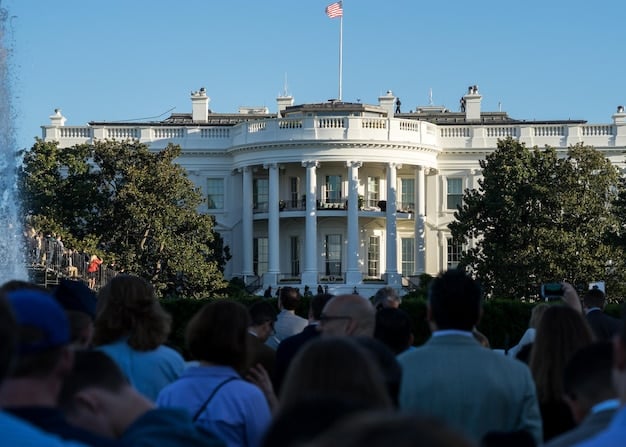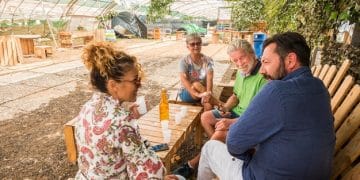Is Your Community Ready? Apply for the 2025 CDBG Grant

Is Your Community Prepared? A Step-by-Step Guide to Applying for the 2025 Community Development Block Grant provides a comprehensive overview of the CDBG program and a detailed guide on how communities can effectively prepare and submit successful applications for the 2025 funding cycle to foster community development.
Are you wondering, Is Your Community Prepared? A Step-by-Step Guide to Applying for the 2025 Community Development Block Grant? Securing funding for community development projects can be a game-changer. Let’s walk through how to get your application ready.
Understanding the Community Development Block Grant (CDBG) Program
The Community Development Block Grant (CDBG) program is a federal initiative designed to support community development activities. Administered by the U.S. Department of Housing and Urban Development (HUD), CDBG provides annual grants to states and local governments. Let’s explore what it’s all about.
What is CDBG?
CDBG funds can be used for a wide range of community development projects. These include housing rehabilitation, public services, infrastructure improvements, and economic development.
Objectives of the CDBG Program
The program aims to benefit low- and moderate-income persons, prevent or eliminate slums or blight, or address urgent community development needs.
- 💰 Provides funding for housing, infrastructure, and public services.
- 🏘️ Supports activities that benefit low- and moderate-income individuals.
- ✅ Aims to improve living conditions and expand economic opportunities.
The CDBG program offers substantial flexibility in how funds are used, allowing communities to address their most pressing needs. It allows for tailored solutions that meet the unique challenges of each locality.

Key Changes for the 2025 CDBG Application Cycle
Staying updated on the latest changes is essential for a successful application. The 2025 CDBG cycle might bring significant updates in eligibility criteria, funding priorities, and application procedures. What should you look out for?
New Eligibility Criteria
HUD often updates eligibility criteria to reflect current priorities. Keep an eye out for changes related to income thresholds and eligible activities.
Funding Priorities
Pay attention to new funding priorities. These might include climate resilience, affordable housing, or revitalization of underserved areas.
Application Process Updates
The application process itself might undergo changes. These could include the introduction of new forms, online submission portals, or revised reporting requirements.
- 📑 Review HUD’s official notices and guidelines.
- 💻 Attend informational webinars and workshops.
- 📞 Contact HUD representatives for clarification.
Being proactive and well-informed ensures that your community’s application aligns with the latest requirements and priorities. This will significantly increase your chances of securing funding.
Step-by-Step Guide to Preparing Your Application
Preparing a CDBG application requires careful planning and attention to detail. This step-by-step guide will walk you through the process of crafting a competitive application.
Step 1: Assess Community Needs
Start by conducting a comprehensive assessment of your community’s needs. This should include identifying key challenges, gathering relevant data, and engaging with community stakeholders.
Step 2: Define Project Goals
Based on your needs assessment, define clear and measurable project goals. Ensure that these goals align with the CDBG program’s objectives and priorities.
Step 3: Develop a Detailed Project Plan
Create a detailed project plan that outlines the activities, timelines, and resources required to achieve your project goals. This plan should include a budget, a performance measurement framework, and a sustainability strategy.

Engaging Community Stakeholders
Community engagement is a critical component of a successful CDBG application. Engaging stakeholders ensures that your project reflects community priorities and garners broad support. How can you make this happen?
Identify Key Stakeholders
Identify key stakeholders in your community. This includes residents, local businesses, community organizations, and government agencies.
Conduct Outreach Activities
Conduct outreach activities to gather input from stakeholders. This could include surveys, focus groups, public meetings, and online forums.
Incorporate Feedback into Your Application
Incorporate stakeholder feedback into your application. Show how your project addresses community priorities and benefits a wide range of residents. Consider having meetings.
- 🤝 Build strong relationships with community leaders.
- 🗣️ Ensure diverse representation in outreach activities.
- 📝 Document all feedback and how it was incorporated.
True community engagement not only strengthens your application, but also fosters a sense of ownership and collaboration. This increases the long-term sustainability of your project.
Writing a Compelling Grant Narrative
The grant narrative is your opportunity to tell your community’s story and make a compelling case for funding. What are some of the key elements?
Clearly Describe the Problem
Clearly describe the problem that your project seeks to address. Provide data and evidence to support your claims, emphasizing the impact on low- and moderate-income residents.
Outline Your Proposed Solution
Outline your proposed solution in detail. Explain how your project will address the identified problem, highlighting its feasibility, cost-effectiveness, and potential impact.
Showcase Your Community’s Strengths
Showcase your community’s strengths and assets. Highlight existing initiatives, partnerships, and resources that will contribute to the success of your project.
A strong narrative is clear, concise, and persuasive. It demonstrates a solid understanding of your community’s needs and a well-thought-out plan for addressing them. Make sure to use understandable language!
Navigating Potential Challenges and Pitfalls
Applying for a CDBG grant can present several challenges. Being aware of common pitfalls can help you navigate the process more effectively. What are some hurdles you might face?
Insufficient Data
One common challenge is insufficient data to support your claims. Ensure that you have access to reliable data sources and conduct thorough data analysis.
Lack of Community Support
Lack of community support can also hinder your application. Engage stakeholders early in the process and build consensus around your project.
Inadequate Budgeting
Inadequate budgeting can jeopardize your project’s feasibility. Develop a realistic budget and secure commitments for matching funds or in-kind contributions.
By anticipating and addressing these challenges head-on, you can strengthen your application and increase your chances of success. Don’t underestimate how helpful planning will be!
| Key Point | Brief Description |
|---|---|
| 📝 Application Prep | Understand objectives and recent changes. |
| 🤝 Stakeholders | Engage stakeholders to reflect priorities. |
| ✅ Grant Narrative | Outline proposed solutions and community strengths. |
FAQ Section
▼
The CDBG program aims to benefit low- and moderate-income persons, address slums or blight, and meet urgent community development needs by providing funding for housing, infrastructure, and public services.
▼
CDBG funds can be used for a wide range of activities, including housing rehabilitation, public services, infrastructure improvements, economic development, and community facility projects.
▼
Community engagement ensures that your project aligns with local priorities, garners broad support, and demonstrates inclusivity, making the application more compelling and increasing its sustainability.
▼
A detailed project plan should include activities, timelines, a budget, a performance measurement framework, and a sustainability strategy. This keeps you on track during the application process.
▼
A well-written grant narrative tells your community’s story, describes the problem your project addresses, and showcases your proposed solution, making a compelling case for funding and support.
Conclusion
Preparing for the 2025 Community Development Block Grant is a challenging but achievable process. By understanding the program’s objectives, engaging stakeholders, and crafting a compelling application, your community can secure the funding needed to drive meaningful change. Stay informed, plan effectively, and work collaboratively to improve the lives of low- and moderate-income residents.


